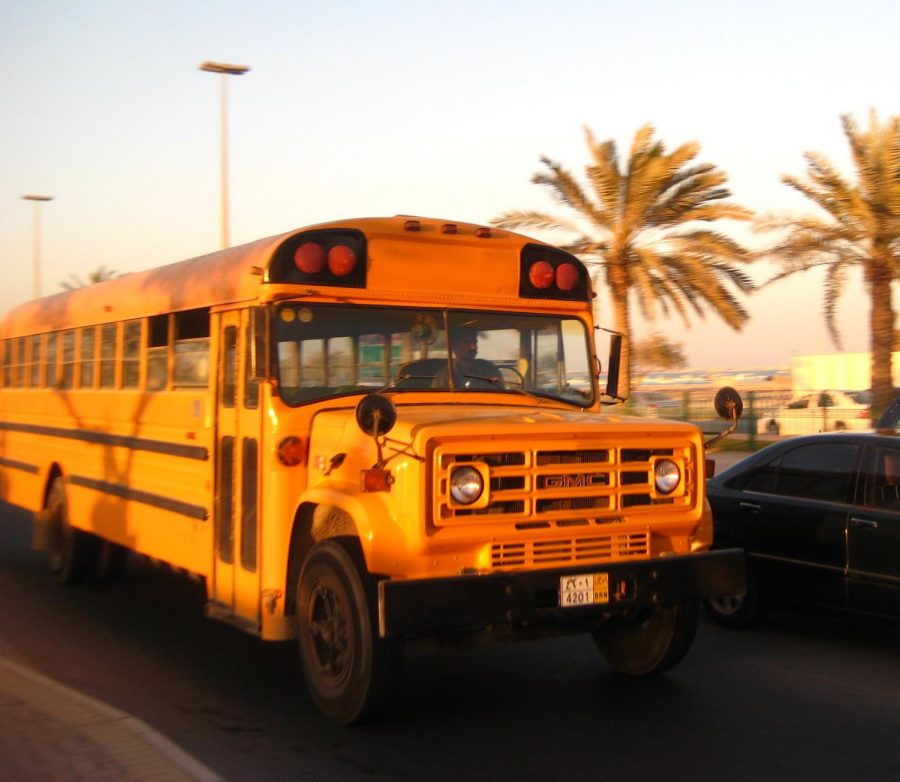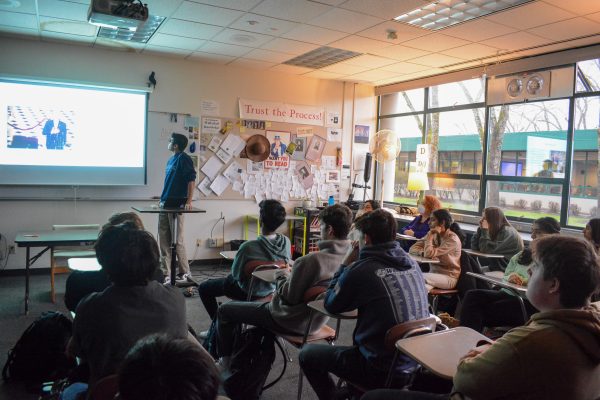Public Transportation
Nearly 500,000 school buses travel to and from schools on a daily basis, bringing over 25 million kids to school each day (www.74million.com). Passengers range from kindergarten to high school seniors, and classic yellow school busses are a common symbol of school for many students across the country.
Jesuit does not currently have a bus system available for all students, and since students come from a range of areas, a bus system would be challenging to create.
“The practical reality of Jesuit is that students come from around 30 different zip codes areas,” Principal Paul Hogan said. “It would be difficult at best to have any sort of equity in transportation for all students.”
But what are the effects and implications of not having a reliable busing system at Jesuit?
Currently, Jesuit has a small school busing system in the form of the St. Andrew Nativity bus, which transports alums of the middle school back to Northeast Portland. If not filled with alums for the day, the bus is open to other students who live in the Northeast area.
But besides the Nativity bus, Jesuit has not had an all-school bus system since the ‘70s. With students living as north as Vancouver, Washington and as west as North Plains and Forest Grove, Jesuit students come from far and wide on a daily basis. Such distances make it difficult for many students to find transportation in the first place.
The most popular and common form of transportation to Jesuit is cars. Most students catch rides with their parents, siblings, friends, neighbors, or drive themselves.
Senior Anna Niedermeyer frequently carpools to and from school despite living less than 10 minutes away.
“My parents usually drive me to school since I can’t drive, and I carpool back home pretty much every day,” Niedermeyer said.
Other students like Jaedina Bayking live far from the school, and often rely on public transportation to get to and from school.
“Sometimes getting back home from Jesuit on the bus takes forty-five minutes to an hour.” Bayking said.
“I tried not to take the bus to school because I was scared of being late. Buses are really unpredictable.”
When it comes to carpooling, the question of environment friendliness is unavoidably raised. Without a school mandated bus, students spend large amounts of time in cars and in traffic. While clean energy vehicles exist, students without energy-efficient vehicles emit higher levels of carbon into the atmosphere.
“Our biggest carbon footprint by far is the driving and parking,” Hogan said.
“Idling is a big issue. There’s a large backlog on Beaverton-Hillsdale highway,” said Jennifer Kuenz, Associate Director of Ecological Justice & Global Networking and Physics Teacher.
Further, not all students have the resources or privilege to transport themselves to school via car, or even leave directly after school ends. Students without cars may have to wait up to forty minutes for a public bus or stay at school for hours waiting for a parent or other ride to pick them up.
With so many reasons to create a bus system, it would seem like an easy decision— but it’s not that simple.
Securing Jesuit buses to transport kids to and from school would be expensive for students and be difficult to procure for the mass array of extracurriculars and distances.
For private schools like OES, which has a bus system for students, families pay upwards of 1200 dollars to fund school buses.
“The cost of trying to serve all the areas students are in are huge and would definitely cause tuition to go up,” Hogan said.
The sheer amount of different cities, events and activities Jesuit students live and participate in decreases the likelihood of a bus system that could encompass all students.
But even despite these complications, should Jesuit employ an all-school bus system at Jesuit?
The answer is unfortunately complicated; as efficient as it might prove to be, Jesuit’s large student body population would prove challenging for creating a school-wide bus system.
With the existence of the St. Andrew Nativity Bus, and the Beaverton Transit center right down the street, faculty have come up with potential ideas for alternate transportation for students without cars.
Some of these ideas include school wide bus passes and shuttles that go to and from the Beaverton Transit center.
“Portland Public offers bus passes to all of their students. Since that is a government funded program, we can’t get those, but it would be great if we could begin advocating for all members of Portland Public to secure those,” Kuenz said.
“It would be great if we could get a regular shuttle somehow going to the Beaverton Transit center. The last school I worked at had a regular shuttle going to and from the train, so it would be great if we could make that happen here,” Hogan said.
For the time it takes to realize some of these ideas, there are many ways students and faculty can work on more environmentally conscious. Some of these ways include biking or walking for Jesuit members in the neighborhood, carpooling, or taking the bus or other forms of public transportation.
Advocating for more Jesuit involvement in public transportation for students is also important for this topic. With the student body voicing their different ideas and providing support, Principal Hogan and Ms. Kuenz’s ideas could be a reality.
In the meantime, shifting transportation methods in order to be more environmentally friendly is an important step towards reducing Jesuit’s carbon footprint as well as encouraging the school to look into school wide transportation methods.
“There needs to be a culture shift. Its an awareness.” Kuenz said.
Put yourself and/or you carpool on the Jesuit carpooling map and check out available carpools now available on the student portal at www.jesuitportland.org.

Jayla Lowery is a current senior at Jesuit High School. She enjoys biking, reading, swimming, music, daydreaming, watching movies, and writing mediocre short stories and screenplays. Journalism has always interested her and she is excited to learn and write articles for the first time. She is really hoping to write pages focused on social issues and pop culture. She believes these topics deeply connect into Jesuit High School’s environment and culture and is interested in exploring the impacts of those subjects on Jesuit further. Jayla also hopes to write about music and movies and interview the many diverse and unique members of the Jesuit community. She is hoping to hear the perspectives and stories of people from all walks of life that make up the greater Jesuit High School community. She can’t wait to meet and talk to people she would usually never get the opportunity to! Jayla is hoping to studying screenwriting in college and hopes journalism will help her improve her writing skills and also help introduce her up to a new form of writing. She hopes she isn’t too nosy of a journalist and that this year is a very fun and exciting one and can hardly wait to get started!















